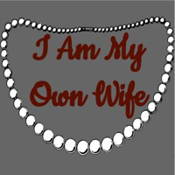
Overview
Synopsis
In early 1993, playwright Doug Wright visited Mahlsdorf, Germany, to interview Charlotte von Mahlsdorf, who curated a trove of items from various points in time throughout German history. His interviews (and his own fascination with) von Mahlsdorf eventually evolved into I Am My Own Wife, a “tour de force” one-man show in which a singular actor portrays 35 different characters, including of course von Mahlsdorf herself. Von Mahlsdorf and her story are in many ways tailor-made for the theatre: she is an eccentric outsider who survived both the Nazi and Communist regimes as a transgender woman. I Am My Own Wife is Wright’s magnum opus and won him both the Tony Award for Best Play and the Pulitzer Prize for Drama. The one-man play is a breathtaking journey through Charlotte’s life, primarily focusing on her experiences during the Communist regime of East Germany and the controversy that surrounded her following revelations that she was a spy for that very regime. But, like Charlotte herself, her story is complicated. The play is as much about a writer’s fascination with his subject as it is his subject itself. Through 35 different characters, Wright unravels Charlotte’s history with the richness of a historian and the theatrical potency of a seasoned playwright, while leaving the ambiguity of her story intact.
Show Information
Context
In 1992, American playwright Doug Wright was introduced to Charlotte von Mahlsdorf, one of the most charismatic-and controversial-figures in LGBT history. Born a biological man in Berlin-Mahlsdorf, Germany, von Mahlsdorf lived openly as a transgender woman during two of the most oppressive regimes in history: Nazi Germany and the communist East German state. She rose to fame in Germany for her massive collection of everyday items from the time of the German Empire’s founding in the late 1800s
to read the context for I Am My Own Wife and to unlock other amazing theatre resources!Plot
Act One
1: A Lecture on the Phonograph In a square room with white French doors, a table, and four neo-Gothic chairs, Charlotte von Mahlsdorf speaks to the audience, briefly describing the history of her prized Edison phonograph. She plays a record, marveling at the sound it makes on the machine and describing how she used to play British and American records during World War 2, hoping that the pilots flying war planes overhead would hear the music and be her friend. Charlotte is a German
to read the plot for I Am My Own Wife and to unlock other amazing theatre resources!Characters
| Name | Part Size | Gender | Vocal Part |
|---|---|---|---|
|
Lead |
Female |
Non-singer |
|
|
Lead |
Male |
Non-singer |
|
|
Supporting |
Male |
Non-singer |
|
|
Featured |
Either Gender |
Non-singer |
|
|
Featured |
Either Gender |
Non-singer |
|
|
Featured |
Male |
Non-singer |
|
|
Featured |
Either Gender |
Non-singer |
Songs
A song with an asterisk (*) before the title indicates a dance number; a character listed in a song with an asterisk (*) by the character's name indicates that the character exclusively serves as a dancer in this song, which is sung by other characters.
Monologues
Scenes
Key Terms
An object of historical value, used on stage to signify memory, status, or passage of time in realistic and symbolic plays.
A Cold War symbol of division, often featured in theatre about separation, ideology, and resistance.
A period of political tension between the US and USSR, dramatized in theatre to reflect fear, ideology, and espionage.
A genre that dramatizes real-life events using interviews, transcripts, and factual materials.
A character type marked by odd or unusual behavior, often used for comedic or dramatic effect.
A form of documentary theatre that uses exact words from interviews and transcripts to portray real-life events on stage.
Videos
Quizzes
Themes, Symbols & Motifs
Sorry! We do not currently have learning modules for this guide.
Quote Analysis
Sorry! We do not currently have learning modules for this guide.
